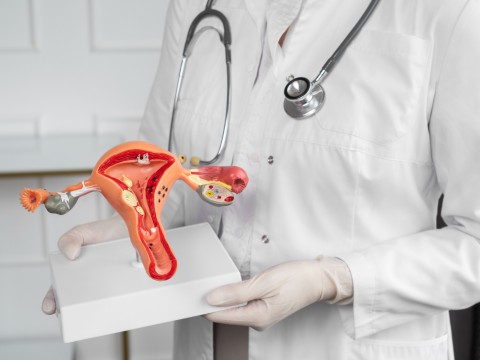Quote of Doç. Dr. İlkin Yeral
Anti-Incontinence Surgeries: Restoring Confidence and Comfort
Incontinence is an often stigmatized, common issue affecting millions around the globe, especially among women and elderly people. It usually includes involuntary leakage of urine, which might be affected by a variety of different causes, including aging and childbirth, or medical issues. While changes in lifestyle and medications may bring temporary relief, there are conditions under which surgery is seen as the only way to cope effectively with the problem. Anti-incontinence surgeries are specialized surgical procedures that help patients regain control over their bladder function and improve the quality of life. This guide will provide an overview of anti-incontinence surgeries, including their types, benefits, and considerations.
What is Anti-Incontinence Surgery?
Anti-incontinence surgery may involve a variety of surgical approaches that aim to treat urinary incontinence either by correcting the anatomical problems or by improving the function of the urinary system. These surgeries usually are recommended when conservative treatments, like pelvic floor exercises, medications, and lifestyle changes, have not been effective. These surgical operations offer long-lasting solutions to incontinence, thus giving patients more comfort and confidence in daily living.
Types of Anti-Incontinence Surgery
Anti-incontinence surgeries are performed under different variants, each fit for specific types of incontinence. The most frequent types of surgeries include
Slings and Tapes: One of the most common interventions for SUI, that is, leakage of the bladder during increased intra-abdominal pressure, which occurs with coughing, sneezing, or exertion, involves the administration of a sling. Here, a synthetic or biological mesh is placed under the urethra to give more support to the urethra and prevent leakage. There is a variety of sling surgeries, such as the transvaginal sling and the transobturator sling, both of which are minimally invasive.
Bladder Neck Suspension: This is a surgical operation for women with stress incontinence. It involves the elevation and fixation of the bladder neck and urethra to a stable structure, often with sutures or mesh. It enhances the holding capacity of the bladder and helps avoid leakage during increased physical activities.
Artificial Urinary Sphincter: AUS is primarily indicated for males with incontinence, especially post-prostate surgery. The device consists of an inflatable cuff that is placed around the urethra, a pressure-regulating pump implanted in the scrotum, and a reservoir placed in the abdomen. The cuff inflates to block leakage and deflates when the patient needs to urinate.
Colposuspension: This procedure is done on women suffering from stress incontinence, especially those who have had multiple pregnancies. Sutures are used to suspend the bladder neck and urethra in place in order to prevent leakage of urine. It is mostly performed through small incisions in the abdomen or via laparoscopy.
Neurostimulation: This is a surgical procedure in which a small device is implanted that sends electrical impulses to the sacral nerves that control the bladder. Neurostimulation can help improve the control of the bladder when a patient has urge incontinence-a condition whereby one has a sudden and overwhelming need to urinate.
When to Undergo Surgery?
Anti-incontinence surgery is, thus, usually performed when the conservative measures such as drugs, pelvic floor exercises, and behavioral changes have failed. Generally, several factors may form the basis for decisions to have surgery; these include:
Severity of Incontinence: The incontinence being of a grave nature will have drastically impacted a patient's quality of life in such cases. Surgery in these conditions could, therefore, be indicated.
Failure of Non-Surgical Treatments: When non-invasive treatments have not provided sufficient relief, surgical intervention becomes a reasonable alternative option.
Type of Incontinence: The form of incontinence could be stress incontinence, urge incontinence, or mixed incontinence, and the severity determines which surgical approach should be considered best.
General Health: A patient should generally be healthy and fit to under the surgical procedure. Prior to undergoing surgery, careful assessment of the patient's past medical history and general health has to be made.
Anti-Incontinence Surgeries-Benefits
Anti-incontinence surgeries can offer many advantages following surgical treatment. These include the:
Restoring Bladder Control: The major advantage of anti-incontinence surgery is restoring bladder control and thus reducing or totally eliminating the leakage of urine.
Improved Quality of Life: Many patients report a significant improvement in the quality of life following surgery. This includes increased freedom from the anxiety of accidents, improved social interactions, and the ability to engage in physical activities without fear of leakage.
Long-Term Relief: These operations often prove to offer relief for long periods from the problem of urinary incontinence. Many symptoms subside to a very large extent and, in the majority of cases, may prevail for many years after the operation.
Minimally Invasive Options: Slings and bladder neck suspension surgery is minimally invasive as most of them involve small, usually inconspicuous, incisions that result in less complications or discomfort while recovering as compared to a classical surgical opening.
Risks and Considerations
While anti-incontinence surgeries are generally safe and effective, as with all surgeries, they come with certain risks and considerations:
Infection: As with any surgical procedure, there is a risk of infection at the incision sites or around implanted devices. Proper post-operative care can help minimize this risk.
Urinary Retention: Difficulty in urinating or the inability to fully empty the bladder is common after some procedures. For the most part, it is temporary but may concern the patient.
Complications with Implanted Devices: Device malfunction, erosion, and dislocation can be possible with implantation surgeries such as artificial urinary sphincters and neurostimulation devices.
Recurrence of Incontinence: On occasions, after a surgery is conducted, incontinence may return. Partially ineffective surgeries or ones in which the cause for incontinence was not fully treated can be contributing factors.
Recovery Time: Even minimally invasive surgeries, which normally come with generally shorter recovery times, does entail some time to heal. In most patients, this will include taking some time off of work and also probably other strenuous activities as recovery occurs.
Preparing for Anti-Incontinence Surgery
Before the anti-incontinence surgery, patients must be evaluated appropriately by a healthcare professional who can assist in the mode of treatment. It includes
Medical History Review: Medical history review regarding past surgeries, medication, and health conditions.
Physical Examination: Physical examination of the pelvic region regarding the severity and type of incontinence.
Diagnostic Tests: Tests such as urodynamics, bladder scans, or cystoscopy may be performed to evaluate bladder function and identify the underlying cause of incontinence.
Post-Operative Care and Recovery
After anti-incontinence surgery, patients will need to follow specific post-operative care instructions to ensure optimal recovery:
Pain Management: Pain and discomfort are typically managed with over-the-counter pain medications or prescription medications.
Follow-Up Appointments: Follow-up visits to the surgeon are necessary concerning progress in healing and addressing concerns.
Activity Restrictions: These involve restrictions of activity, particularly strenuous activity involving the abdominal muscles and pressure on the pelvic area.
Bladder Training: In some instances, it is advised that patients undergo some forms of bladder training to reorient and condition the bladder to enhance its performance.
Conclusion
Anti-incontinence surgery is an effective and reliable solution for patients suffering from urinary incontinence, especially when other forms of treatment have not been effective. With advances in surgical techniques and the availability of minimally invasive options, patients can expect significant improvements in bladder control and an improved quality of life. If one is considering anti-incontinence surgery or knows someone who is, a healthcare provider should be consulted to explain the best treatment options given individual needs and medical history. With proper surgical intervention, individuals can regain control and live with confidence, no longer being held back by issues of incontinence.
- Health Insurance
-
Accommodation
- Online Healthy Life Assistant 9/5
- Post - Experience Follow Up 6 Month
-
Extra Privileges

- Health Insurance
-
Accommodation
- Online Healthy Life Assistant 24/7
- Post - Experience Follow Up 1 Year
- Pre-Treatment Doctor Consultation
-
Extra Privileges

 Private
Private
- Health Insurance
- Healthy Life Butler
- Post - Experience Follow Up 2 Year
- World-Famous Doctor Consultation
-
Extra Privileges
No suitable hotel found for the relevant dates!
* Price varies depending on extra and upgrade selections.




